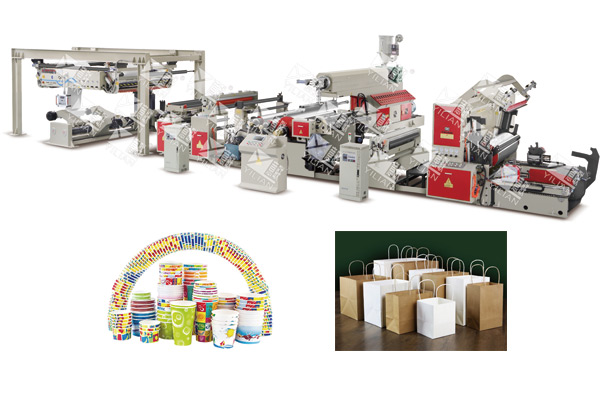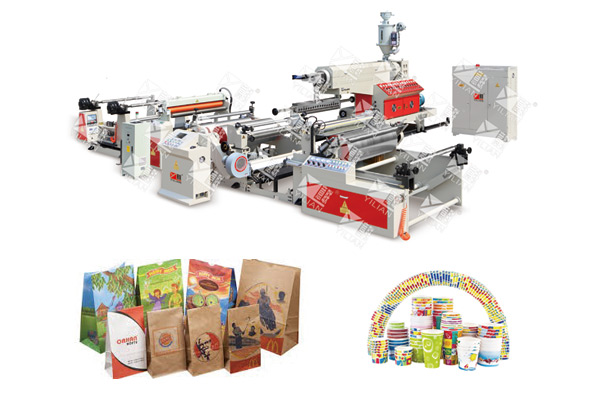What is the difference between adhesive and extrusion lamination?
Datetime: 4/11/2025 9:16:00 AM Visit: 64
Introduction
Lamination is a key process in packaging, textiles, and various industrial applications that enhances the durability, barrier, and aesthetics of materials. Two common lamination methods are adhesive lamination and extrusion lamination. While both technologies are capable of bonding multiple layers of materials together, they differ significantly in the process, materials used, and end-use applications.
This article explores the differences between adhesive lamination and extrusion lamination, their respective advantages and disadvantages, and their ideal application scenarios.
I. What is Adhesive Lamination?
Adhesive lamination is the bonding of two or more substrates (such as films, foils, or fabrics) together using an adhesive layer. The adhesive can be solvent-based, water-based, or solvent-free (100% solids content).
Adhesive Lamination Process:
1. Adhesive Application – The adhesive is applied to the substrate by gravure coating, roller coating, or spraying.|
2. Drying (if applicable) – Solvent-based or water-based adhesives require drying to remove the carrier.
3. Bonding – The adhesive coated substrate is pressed onto another layer using a pressure roller.
4. Curing – The adhesive is fully cured, forming a strong bond.
Advantages:
1.Suitable for heat sensitive materials (no high temperatures required). Suitable for a wide range of substrates (film, paper, foil).
2.Different types of adhesives can be used depending on the specific performance needs (flexibility, high barrier, etc.).
Disadvantages:
Slower process due to drying/curing requirements.
Potential volatile organic compound (VOC) emissions (with solvent-based adhesives).
Adhesive choice can affect performance (peeling, delamination risk).
Applications:
Flexible packaging (snack bags, pouches)
Medical packaging
Labels and decorative laminates
2. What is extrusion lamination?
Extrusion lamination technology achieves material bonding by melting a thermoplastic resin, typically polyethylene, polypropylene, or ethylene vinyl acetate (EVA), and extruding it into a molten film. As the plastic cools, the heat and pressure create a strong bond.
Extrusion lamination process:
1. Resin melting – polymer pellets are melted in an extruder.
2. Extrusion – the molten plastic is extruded through a flat die into a film.
3. Lamination – the hot polymer is pressed between two substrate layers using a cooling roller.
4. Cooling and curing – the plastic cools to form a permanent bond.
Advantages
Faster than adhesive lamination (no drying required).
Excellent moisture and gas barrier properties.
Can bond dissimilar materials (e.g., paper and foil).
Disadvantages:
High temperatures may damage heat-sensitive materials.
Limited to thermoplastics (PE, PP, EVA).
Thicker layers may reduce flexibility.
Applications:
Stand-up pouches
Liquid packaging (milk cartons, juice cartons)
Industrial films (agriculture, construction)

3. Key differences between adhesive lamination and extrusion lamination
| Factors | Adhesive lamination | Extrusion lamination |
| Bonding mechanism | Uses liquid or solvent-based adhesive | Uses molten thermoplastic resin |
| Speed | Slower (needs drying/curing) | Faster (immediate cooling) |
| Heat sensitivity | Suitable for heat-sensitive materials | May damage heat-sensitive substrates |
| Barrier properties | Depends on adhesive type | Excellent moisture/gas barrier properties |
| Material flexibility | More substrate options | Limited to compatible thermoplastics |
| Cost | Higher operating costs (adhesive) | Lower long-term costs (resin-based) |
4. Which one should you choose?
The choice between adhesive and extrusion lamination depends on:
Material compatibility – Extrusion lamination is best suited for thermoplastics, while adhesive lamination is more flexible.
Production speed – Extrusion lamination is faster and suitable for high-volume production.
End-use requirements – Extrusion lamination has better barrier properties, while adhesive lamination allows for finer control of bond strength.
Conclusion
Both adhesive lamination and extrusion lamination have advantages for different applications. Adhesive lamination excels in versatility and compatibility with delicate materials, while Extrusion lamination is ideal for high-speed production and excellent barrier properties.










